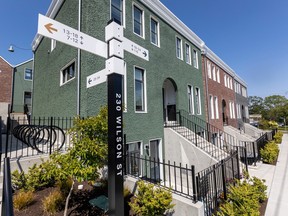KELOWNA, B.C. – April 6th, 2023.
Residential real estate market moving in a positive direction for spring as sales activity picks up after a slow start at the beginning of the year, reports the Association of Interior REALTORS® (the Association).
A total of 1,207 residential unit sales were recorded across the Association region in March representing a 37.2% decrease in sales compared to the same month last year, yet up compared to February’s 831 unit sales.
“The upwards movement in sales activity compared to the previous month is showing signs that market activity is on its way to recovering from the previous month’s slump, while still maintaining healthy market activity,” says the Association of Interior REALTORS® President Lyndi Cruickshank, adding that “a more balanced market allows both parties to confidently move forward with their real estate aspirations.”
New residential listings saw an increase over the previous month’s 1,579 with 2,442 new listings recorded, despite a 15.7% decrease within the region compared to March 2022. Overall inventory saw a healthy 61.1% uptick with 5,903 units currently on the market at the close of March. The highest percentage increase in active listings was recorded in the South Okanagan with a total increase of 81% compared to the same month last year.
“This is the highest volume of new listings we’ve had for some time now, indicating that we are heading in a positive direction,” notes Cruickshank, adding “while we’re not out of the woods yet, this will help provide more options to buyers and sellers.”
“The spring months usually witness a surge in market activity, and REALTORS® will certainly be instrumental in providing adequate information and support during this period. Whether you are a buyer or a seller, it’s always a good idea to work with a real estate professional who can assist you in navigating current market conditions,” says Cruickshank.
The benchmark price for single-family homes in the Central Okanagan, North Okanagan, South Okanagan and Shuswap/Revelstoke regions all saw decreases in year-over-year comparisons, with the highest percentage decrease for single-family homes in the Central Okanagan region coming in at $1,001,500. The townhome and condominium categories all saw decreases across the various sub-areas in the benchmark price with the exception of townhomes in the North Okanagan, which saw a 9.2% increase compared to March 2022.
Given the high stakes on such a significant financial transaction, home sellers and buyers can benefit from the knowledge and skills of a practiced REALTOR®. Contact your local REALTOR® to find out more about the real estate market and how they can help you achieve your real estate goals.






